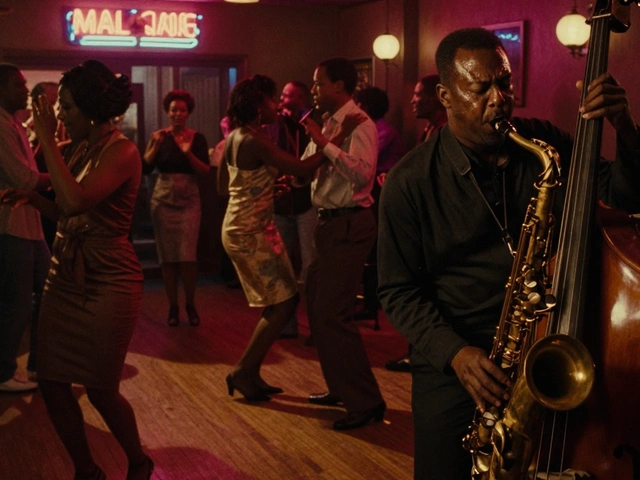Music genres are like the labels on a bunch of jars, helping us sort through the massive world of sound. Think of them as helpful categories that let us know what kind of beats or vibes we can expect. For instance, when you hear 'rock,' your mind might jump to guitars and energetic drums. Meanwhile, 'pop' might make you think of catchy melodies and upbeat rhythms.
Getting to know these genres can totally change how you experience music. You'll begin to notice why certain songs get stuck in your head or why some tracks make you feel a certain way. Plus, understanding genres can help you branch out and discover new artists or styles you might not have stumbled upon otherwise.
What are Music Genres?
Music genres are the categories that help us organize and understand the massive variety of sounds we hear. They're like musical blueprints, giving us a quick hint at what a song or album might sound like. Without these categories, finding music we'd actually want to hear would be like finding a needle in a haystack.
Genres typically share common elements like rhythm, lyrics, and instrumentation. For example, rock often features electric guitars and a strong backbeat, while jazz might involve more improvisation and brass instruments. Recognizing these music genres helps us connect more deeply with the songs we love and appreciate their craftsmanship.
One interesting thing about music genres is that they're not set in stone. Over time, they can evolve and fuse with other styles, creating something new and exciting. For example, hip-hop emerged in the late 1970s and has since morphed into various sub-genres like trap, conscious rap, and more.
Why Do Genres Matter?
Understanding types of music is crucial because it's not just about categorizing songs for the sake of it. Genres guide how artists create music and how listeners discover it. When you walk into a music store or browse a streaming service, genres help you navigate the plethora of options, making your search more straightforward.
Plus, genres affect how we perceive and enjoy music. Some people might love the raw energy of punk rock, while others might find peace in the structured sounds of classical music. Knowing the characteristics of different genres lets us tailor our listening experiences to our mood and preferences.
How Many Genres Are There?
Sounds crazy, but there are literally hundreds of known genres out there. Some, like pop and rock, are super mainstream, while others, like shoegaze or vaporwave, might be more niche. Check out this simple breakdown of some broader categories:
- Rock: Includes sub-genres like alternative, punk, and grunge.
- Pop: Often features catchy hooks and a wide audience appeal.
- Jazz: Known for improvisation and swing rhythms.
- Classical: Encompasses orchestrated and instrumental music pieces.
Popular Music Genres
Exploring different music genres is like tasting foods from all over the world—the variety is just massive. Let's dive into some of the most well-known genres and their key characteristics so you can understand them better.
Rock
Rock music is all about attitude and energy. It burst onto the scene in the 1950s with legends like Elvis Presley, and over the decades, it’s splintered into countless subgenres like punk rock, heavy metal, and grunge. Key instruments? Definitely electric guitars and drums, with vocals ranging from smooth to screaming.
Pop
Pop music is your go-to for catchy and radio-friendly tracks. It’s designed to appeal to a broad audience, with memorable hooks and simple lyrics. Think of names like Taylor Swift and Justin Bieber, who've taken pop to massive heights. It’s constantly evolving, blending elements from rock, dance, and even country.
Jazz
If you like improvisation and complex rhythms, jazz is your jam. Originating in the African-American communities in the late 19th and early 20th centuries, jazz offers a rich history of innovation. Instruments like the saxophone and piano often lead the way, and artists like Louis Armstrong and Miles Davis are household names.
Hip-Hop
This genre started in the 1970s in the Bronx and has grown into a cultural phenomenon. Important not just for its music but for its impact on language, fashion, and politics. Hip-hop features rhythmic vocal style known as rap, typically set to strong beats. Legends like Tupac and Nas have paved the way for contemporary stars like Kendrick Lamar.
Classical
If you ever need music that's stood the test of time, classical is it. Composers like Beethoven and Mozart created symphonies, sonatas, and operas that remain as influential today as they were centuries ago. The genre is complex, often layered with multiple instruments and intricate harmonies, mainly delivered by orchestras.
Musical Trends
| Year | Genre Making Waves |
|---|---|
| 1980s | Synth-pop |
| 1990s | Grunge (Rock Subgenre) |
| 2000s | Alternative Hip-Hop |
These are just a handful of the many genres that shape our music experiences. Understanding what makes each one unique can deepen your appreciation and maybe even inspire you to expand your playlist.

How Genres Evolve
The world of music genres isn't static. It's constantly on the move, evolving as new trends and technologies come into play. Every genre has a story, and it's often one of change. Let’s dive into some of the key ways these music categories grow and transform over time.
Influence of Technology
One of the major drivers of change is technology. Think about how the invention of electronic instruments gave birth to entirely new genres like electronic dance music (EDM). Back in the day, the emergence of the electric guitar was a game-changer for rock music, allowing artists to experiment with new sounds and techniques.
| Key Technological Innovations | Impact |
|---|---|
| Electric Guitar | Redefined rock music |
| Synthesizers | Led to electronic and synthpop genres |
| Streaming Platforms | Changed music access and artist exposure |
Cross-Cultural Influences
Music doesn’t exist in a vacuum. As people from different cultures interact, they share musical ideas, leading to exciting new blends. This is how we get genres like Latin pop or Afrobeat, which merge traditional sounds with modern elements. Artists pulling from various cultural backgrounds create hybrids that become popular and pave the way for new genres.
Social and Political Factors
Social movements and political changes also drive genre evolution. Look at how hip-hop emerged from the streets of New York in the 1970s, giving a voice to marginalized communities. Similarly, punk rock developed as a rebellious response to social and political issues of its time. These genres evolved as their cultural landscapes changed.
So, next time you hear a new twist on a familiar genre, remember that evolution is just a part of its DNA. By understanding how music genres develop, you’ll gain a deeper appreciation for the diverse sounds we enjoy today.
Listening Tips for Different Genres
Diving into different music genres is like exploring new worlds. Each has its own vibe, instruments, and moods. So, what's the best way to enjoy different types? Let's break it down.
1. Rock
When you're getting into rock, pay attention to the dynamics. Rock often boasts loud and quiet sections that keep things interesting. It’s all about the energy, so crank up the volume a bit. If you want to dig deeper, listen to the guitar riffs. They're the heart of many rock songs.
2. Jazz
Jazz is all about improvisation and feeling the moment. Try listening at different times of the day, as your mood can really affect how you perceive it. Focus on the solos. Each musician gets a turn to express themselves, almost like telling a story without words.
3. Hip-Hop
Understanding music in hip-hop involves picking up on the lyrics and beats. Lyrics often tell a story or deliver powerful messages. Follow the rhythm, and don’t shy away from replaying tracks to catch all the details. Headphones can help you really hear those deep bass lines.
4. Classical
Classical music is best enjoyed with little to no distractions. It’s like an audio journey. Pay attention to how compositions build and resolve. Listening in a quiet space can help you appreciate the nuances, like soft strings or soaring brass.
5. Pop
Pop is all about catchy hooks and melodies. Let yourself enjoy its simplicity and the layers of production. Focus on the catchy choruses designed to get stuck in your head.
Listening to different types of music offers an adventure in itself. It's like tasting different cuisines to find what suits your taste. So go ahead, try different genres, and enjoy the variety the world of music has to offer.






